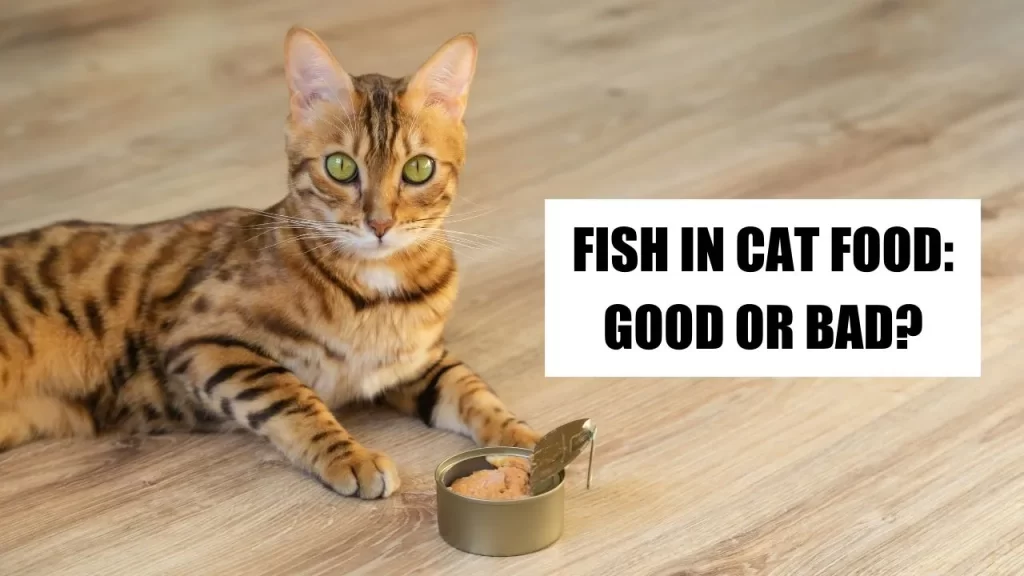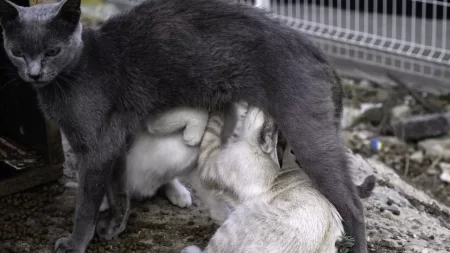The role of fish in cat foods is a most asked question, as fish is frequently used in many feline meals.
Does it truly benefit our feline companions? This question has a complex answer.
Indeed, fish supplies cats with essential protein, omega-3 fatty acids, and vitamins. On the other hand, it can also cause potential hazards, like allergies, toxins, and nutritional imbalances.
This article will delve into the merits and drawbacks of incorporating fish into cat food, explore the varieties of fish typically used, and guide you in making knowledgeable decisions about your cat’s dietary needs.
Understanding Fish as an Ingredient in Cat Food
The Benefits of Fish in Cat Food
Fish is a good source of protein for your cat. It has all the amino acids and healthy fats your cat needs.
It has a lot of omega-3 fatty acids that help your cat’s skin, coat, joints, and immune system.
Omega-3 fatty acids also help your cat’s brain and may make your cat smarter. Fish also has some vitamins and minerals that help your cat’s eyes, heart, and well-being.
The Potential Drawbacks of Fish in Cat Food
You might think fish is great for your cat, but it’s not all good. Some cats can’t handle fish or some kinds of fish. They might get fish allergies that make them itch, scratch, lose hair, throw up, have diarrhea, or have trouble breathing. They might also get fish intolerance that makes their stomachs hurt.
Fish can also be bad for your cat because it can have toxins and pollutants that can hurt your cat. Things like mercury, lead, arsenic, cadmium, PCBs, and pesticides. These can mess up your cat’s nerves, kidneys, liver, and thyroid. Some fish, like tuna and mackerel, have more mercury than others.
Fish can also mess with your cat’s vitamins, especially vitamin E and vitamin B1 (thiamine). Vitamin E keeps your cat’s cells healthy. Vitamin B1 helps your cat’s energy and nerves. If your cat doesn’t get enough of these vitamins, they can get really sick. They might get weak muscles, nerve problems, or heart problems.
Types of Fish Used in Cat Food
Many types of fish are used in cat food, but some are more suitable than others. Here are some of the most common ones:
- Salmon: Salmon is one of the best fish for cats, as it is high in protein, omega-3 fatty acids, and vitamin D. It is also low in mercury and other contaminants. Salmon can be fed to cats without cooking or canned.
- Tuna: Tuna is another popular fish for cats, as it is also high in protein and omega-3 fatty acids. However, tuna can also contain high levels of mercury and other toxins, especially if it is from the Atlantic Ocean or the Gulf of Mexico. Tuna can also deplete your cat’s vitamin E and vitamin B1 levels if fed too often. Tuna should be fed to cats only occasionally and in moderation.
- Whitefish: Whitefish is a generic term that refers to several types of fish, such as cod, haddock, pollock, and flounder. Whitefish is low in fat and calories, but also low in omega-3 fatty acids and other nutrients. Whitefish can be a good source of protein for cats, but it should not be the main or only source of fish in their diet.
Making Informed Choices About Your Cat’s Diet
Fish can be a healthy and tasty addition to your cat’s diet, but it should not be the only or main source of protein or nutrition for your cat. Here are some tips to help you make informed choices about your cat’s diet:
1. Checking for High-Quality Fish Sources
Select cat food featuring fish procured from trustworthy and certified providers like the Marine Stewardship Council (MSC) or the Aquaculture Stewardship Council (ASC). Such providers adhere to rigorous benchmarks for sustainability, traceability, and superior quality. Shun cat food containing fish by-products, fish meals, or unidentified fish origins; these potentially harbor lower-grade ingredients and a higher contaminant load.
2. Looking for Brands with Limited Processing
Pick cat foods that have fresh, raw, or lightly cooked fish, not heavily processed or preserved fish. Processing can lower the nutrition of fish and add things, such as artificial colors, flavors, preservatives, and fillers. Look for cat foods that keep fish natural, such as freezing or refrigeration.
3. Considering Your Cat’s Nutritional Needs
Fish is not enough or balanced food for cats by itself. Your cat needs different animal proteins, fats, carbs, vitamins, minerals, and water to get the nutrition he needs. Look for cat foods that give a balanced and complete diet for your cat’s age and health. You can also add other sources of protein to your cat’s diet, such as chicken, beef, lamb, or eggs.
4. Consulting with Your Veterinarian
Ask your veterinarian how much and how often to feed fish to your cat. Your veterinarian can tell you the best kind and amount of fish for your cat based on age, weight, activity, health, and likes. Your veterinarian can also check your cat’s health and tell you if you need to change or adjust his diet.
Conclusion
Fish can be good or bad for cats. It depends on the kind, source, amount, and how often you feed it.
Fish has some benefits for cats, such as protein, omega-3s, and vitamins. But it also has some risks, such as allergies, toxins, and vitamin deficiencies.
To choose the best diet for your cat, look for high-quality fish sources, brands with less processing, your cat’s nutritional needs, and your veterinarian’s advice.
This way, you can make sure your cat likes and benefits from fish without hurting his well-being.







